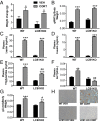A peripheral endocannabinoid mechanism contributes to glucocorticoid-mediated metabolic syndrome
- PMID: 25535367
- PMCID: PMC4291642
- DOI: 10.1073/pnas.1421420112
A peripheral endocannabinoid mechanism contributes to glucocorticoid-mediated metabolic syndrome
Abstract
Glucocorticoids are known to promote the development of metabolic syndrome through the modulation of both feeding pathways and metabolic processes; however, the precise mechanisms of these effects are not well-understood. Recent evidence shows that glucocorticoids possess the ability to increase endocannabinoid signaling, which is known to regulate appetite, energy balance, and metabolic processes through both central and peripheral pathways. The aim of this study was to determine the role of endocannabinoid signaling in glucocorticoid-mediated obesity and metabolic syndrome. Using a mouse model of excess corticosterone exposure, we found that the ability of glucocorticoids to increase adiposity, weight gain, hormonal dysregulation, hepatic steatosis, and dyslipidemia was reduced or reversed in mice lacking the cannabinoid CB1 receptor as well as mice treated with the global CB1 receptor antagonist AM251. Similarly, a neutral, peripherally restricted CB1 receptor antagonist (AM6545) was able to attenuate the metabolic phenotype caused by chronic corticosterone, suggesting a peripheral mechanism for these effects. Biochemical analyses showed that chronic excess glucocorticoid exposure produced a significant increase in hepatic and circulating levels of the endocannabinoid anandamide, whereas no effect was observed in the hypothalamus. To test the role of the liver, specific and exclusive deletion of hepatic CB1 receptor resulted in a rescue of the dyslipidemic effects of glucocorticoid exposure, while not affecting the obesity phenotype or the elevations in insulin and leptin. Together, these data indicate that glucocorticoids recruit peripheral endocannabinoid signaling to promote metabolic dysregulation, with hepatic endocannabinoid signaling being especially important for changes in lipid metabolism.
Keywords: 2-AG; anandamide; corticosterone; liver; obesity.
Conflict of interest statement
The authors declare no conflict of interest.
Figures



Similar articles
-
Peripheral endocannabinoid signaling controls hyperphagia in western diet-induced obesity.Physiol Behav. 2017 Mar 15;171:32-39. doi: 10.1016/j.physbeh.2016.12.044. Epub 2017 Jan 5. Physiol Behav. 2017. PMID: 28065722 Free PMC article.
-
CB1 receptor mediates the effects of glucocorticoids on AMPK activity in the hypothalamus.J Endocrinol. 2013 Sep 9;219(1):79-88. doi: 10.1530/JOE-13-0192. Print 2013 Oct. J Endocrinol. 2013. PMID: 23884964
-
Novel effects of the cannabinoid inverse agonist AM 251 on parameters related to metabolic syndrome in obese Zucker rats.Metabolism. 2013 Nov;62(11):1641-50. doi: 10.1016/j.metabol.2013.06.011. Epub 2013 Aug 6. Metabolism. 2013. PMID: 23932644
-
Understanding metabolic homeostasis and imbalance: what is the role of the endocannabinoid system?Am J Med. 2007 Sep;120(9 Suppl 1):S18-24; discussion S24. doi: 10.1016/j.amjmed.2007.06.007. Am J Med. 2007. PMID: 17720356 Review.
-
Pharmacotherapeutic targeting of the endocannabinoid signaling system: drugs for obesity and the metabolic syndrome.Physiol Behav. 2008 Mar 18;93(4-5):671-86. doi: 10.1016/j.physbeh.2007.11.012. Epub 2007 Nov 21. Physiol Behav. 2008. PMID: 18155257 Free PMC article. Review.
Cited by
-
FGF21 activates AMPK signaling: impact on metabolic regulation and the aging process.J Mol Med (Berl). 2017 Feb;95(2):123-131. doi: 10.1007/s00109-016-1477-1. Epub 2016 Sep 27. J Mol Med (Berl). 2017. PMID: 27678528 Review.
-
Why Do Marijuana and Synthetic Cannabimimetics Induce Acute Myocardial Infarction in Healthy Young People?Cells. 2022 Mar 28;11(7):1142. doi: 10.3390/cells11071142. Cells. 2022. PMID: 35406706 Free PMC article. Review.
-
Overcoming the Psychiatric Side Effects of the Cannabinoid CB1 Receptor Antagonists: Current Approaches for Therapeutics Development.Curr Top Med Chem. 2019;19(16):1418-1435. doi: 10.2174/1568026619666190708164841. Curr Top Med Chem. 2019. PMID: 31284863 Free PMC article. Review.
-
Cannabinoid type-1 receptors in CaMKII neurons drive impulsivity in pathological eating behavior.Mol Metab. 2025 Feb;92:102096. doi: 10.1016/j.molmet.2025.102096. Epub 2025 Jan 7. Mol Metab. 2025. PMID: 39788291 Free PMC article.
-
Multiple endocannabinoid-mediated mechanisms in the regulation of energy homeostasis in brain and peripheral tissues.Cell Mol Life Sci. 2019 Apr;76(7):1341-1363. doi: 10.1007/s00018-018-2994-6. Epub 2019 Jan 1. Cell Mol Life Sci. 2019. PMID: 30599065 Free PMC article. Review.
References
-
- Rosenzweig JL, et al. Endocrine Society Primary prevention of cardiovascular disease and type 2 diabetes in patients at metabolic risk: An endocrine society clinical practice guideline. J Clin Endocrinol Metab. 2008;93(10):3671–3689. - PubMed
-
- Grundy SM, Brewer HB, Jr, Cleeman JI, Smith SC, Jr, Lenfant C. American Heart Association National Heart, Lung, and Blood Institute Definition of metabolic syndrome: Report of the National Heart, Lung, and Blood Institute/American Heart Association conference on scientific issues related to definition. Circulation. 2004;109(3):433–438. - PubMed
-
- Wardle J, Chida Y, Gibson EL, Whitaker KL, Steptoe A. Stress and adiposity: A meta-analysis of longitudinal studies. Obesity (Silver Spring) 2011;19(4):771–778. - PubMed
Publication types
MeSH terms
Substances
Grants and funding
LinkOut - more resources
Full Text Sources
Other Literature Sources
Medical
Molecular Biology Databases

